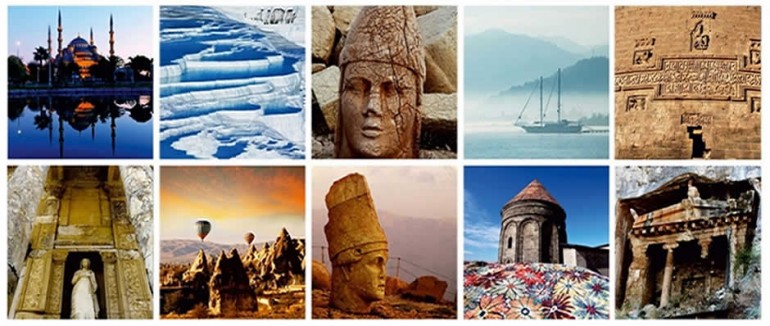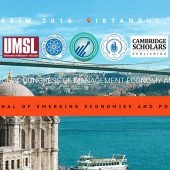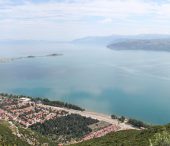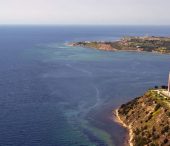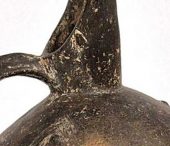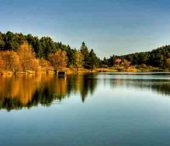The number of Turkey’s cultural assets inscribed on the World Heritage List, which are chosen by the United Nations Education, Science and Culture Organization (UNESCO) and comprised of cultural and natural assets put under protection worldwide, has increased to 15. UNESCO has recently approved the inscription of Diyarbakır Fortress, Hevsel Gardens and Ephesus on its World Heritage List.
The World Heritage List covers the cultural and natural assets designated by UNESCO. The monuments and protected areas, which were undertaken to be guaranteed by over 175 countries that signed the Convention Concerning the Protection of World Cultural and Natural Heritage consisting of 38 articles in 1972,and which were deemed to meet the World Heritage Criteria are covered by the list.
The World Heritage Committee comprising of representatives from 21 countries elected by the convention-signing countries makes its selection from the candidate assets, and thus prepares the list. Furthermore, the Committee directs the World Heritage Fund (WHF) and ensures that the assets in the list are protected.
16 cultural assets in the permanent list and 60 cultural assets in the temporary list
Diyarbakır Fortress and Hevsel Gardens were recently inscribed on the World Heritage List during the 39th meeting of the UNESCO World Heritage Committee that was held in Bonn, Germany on July 4, 2015. It was decided to include the Ancient City of Ephesus into the World Heritage List during the meeting on July 5. As a result, the number of historical, archaeological and geographical points of our country inscribed on the list increased to 16. Moreover, the number of Turkey’s assets included into the UNESCO World Heritage Temporary List is 60. The temporary list, namely, the preliminary step for the World Heritage List, consists of the inventory related with the assets that are deemed appropriate for inclusion in the UNESCO World Heritage List.
The historical, archaeological and geographical points of our country inscribed on the list are as follows:
1. Cappadocia and Göreme National Park
1985
Cappadocia emerged 60 million years ago as a result of the abrasion on soft layers deriving from the lava and ashes from Erciyes, Mount Hasan and Mount Güllü due to rain and wind that occurred for millions of years. The land inhabited by Hittites later on became one of the most important centers of Christianity.
2. Great Mosque and Hospital of Divriği
1985
An architect called Hürrem Shah, the son of Ahlatlı Muğis, has been commissioned by Ahmad Shah, Emir of Mengücekli, in 1228–29 and the Hospital by Turan Melek, Ahmad Shah’s wife, at the same date. It’s a unique work in terms of its plan and decoration.
3. Historical Sites in Istanbul
1985
Istanbul is a city of the world located at the intersection of Europe and Asia with a history dating back to 8.500 years as a settlement due to a harbor that was uncovered during the recent excavations in Yenikapı, approximately 3,000 years as a city and 1,600 years as the capital.
4. Hattusa: Capital of the Hittite Empire
1986
Hattusa, capital of the Hittite Empire and also a developed region in fields of art and architecture, is located on the southeast of Sungurlu district of Çorum. Five cultural layers were uncovered in excavations. The ruins from the Hatti, Assyrian, Hittite, Phrygian, Gallates, Roman and Byzantium eras were uncovered in these excavations.
5. Mount Nemrut
1987
Mount Nemrut, one of the 8 wonders of the world, is located in Adıyaman. King of Commagene Antiochus Theos has ordered the construction of sculptures of many Greek and Persian gods, as well as his tomb-monument of himself, at the top of this mountain in A.D. 62. The stone carvings of gods are located on these tombs like the head of an eagle.
6. Pamukkale and Hierapolis National Park
1988
Pamukkale is a natural area in the province of Denizli in southwestern Turkey. The city hosts hot springs and carbonate minerals from flowing waters, terraces and travertine. It’s located on the Menderes River valley with a mild climate in Turkey’s Aegean Region.
7. Xanthos-Letoon
1988
Letoon is an ancient city near Fethiye. According to a story told by poet Ovidius, the city has been established in the name of Leto, who became pregnant from Zeus. Traces from the oldest settlement in the city date back to A.D. 7. The ruins and inscriptions that were uncovered show that the place has been a religious and political area. There are three adjoining temples in center of the archeological site. The one located on the northernmost part has been dedicated to Leto, the one in the middle to Artemis and the southern one to Apollo.
8. Historical City of Safranbolu
1994
Safranbolu has not been affected by the modern urbanization of 1950´s in Anatolia to a great extent. As a result, its architectural traditions, as well as its earthquake-proof and three-chambered Pontian Greek-style houses have been preserved.
9. Ancient City of Troy
1998
The ancient city is located on the western part of Tevfikiye village of the central district of Çanakkale. The ancient city, where the Trojan War that was mentioned in Iliad, one of the two poetic sagas allegedly written by Homer, has occurred, was discovered in 1870’s by Heinrich Schliemann, a German amateur archeologist.
10. Selimiye Mosque and Social Complex
2011
Located in Edirne, Selimiye Mosque has been built by Architect Sinan with the order of Ottoman Sultan Selim II. Selimiye Mosque, which has been built by Sinan at the age of 90 (according to some books, he was 80 at that time) and which is called as “my best work” by Sinan, is one of the most important works of Architect Sinan, as well as the Ottoman architecture.
11. Çatalhöyük Ruins from the Neolithicera
2012
Çatalhöyük is a considerably large settlement in Central Anatolia which dates back to Neolithic and Chalcolithic eras and which has been inhabited 9,000 years ago. The mounds have been uninterruptedly inhabited for approximately 2,000 years. The Neolithic settlement’s size, population and strong artistic and cultural tradition is enormously interesting. The residents of this settlement, one of the oldest ones throughout the world, are also one of the first agricultural societies.
12. Bursa and Cumalikizik
2014
Cumalıkızık, a neighborhood in the Yıldırım district of Bursa province, is one of five Kızık villages established on northern foothills of Mount Uludağ. Cumalıkızık Ethnography Musuem is located here. The historic fabric has been protected to a great extent in the village, which dates back to approximately 1300’s, and early examples of the rural Ottoman civilian architecture have succeeded in remaining intact until today.
13. Pergamon and Cultural Landscape
2014
Located in Izmir, Bergama is defined as Pergamon or Pergamonos in ancient texts. Pergamon is located on the shore of a rift valley in the Northern Aegean region, where the Kaikos River (Bakırçay) runs along in the eastern-western direction. Traces from the first settlement on the Acropolis of Pergamon Hill date back to the 7th-6th century A.D.
14. Diyarbakır Fortress and Hevsel Gardens
2015
Diyarbakır Fortress is an important structure dating back to 300 A.D., as well as a cultural asset with outstanding universal values, which document the intertwining civilizations in Anatolia with inscriptions in Hellenistic, Latin, Assyrian, Armenian and Arab languages. Furthermore, Hevsel Gardens, which have been connected to the castle for thousands of years, is a significant natural area meeting the city’s food needs since the Assyrian era until now.
15. Ancient City of Ephesus
2015
Located in Selçuk district of Izmir, the Ancient City of Ephesus has been hosting the Artemis Temple, one of the Seven Wonders of the World, as well as the House of Virgin Mary in Selçuk, which has been serving as a religious center for many centuries. Ephesus is a unique cultural asset reflecting the diversity of Anatolian civilizations, as well as an important place of pilgrimage representing the intercultural dialogue through hundreds of thousands of visitors.
16. Archaeological Site of Ani
2016
Historic Ani ruins in Kars, was included in the UNESCO World Cultural Heritage List
15 July 2016.
Sources: http://www.kdk.gov.tr/

